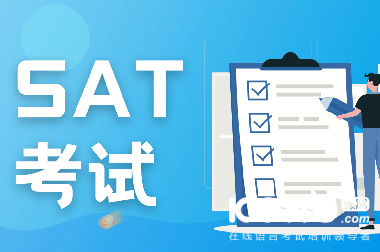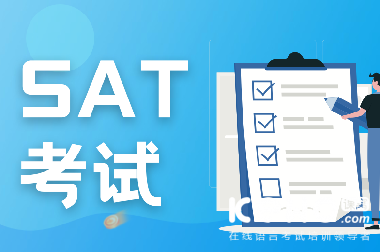学会这些修辞方法助攻SAT写作

在新SAT写作部分的考试中,根据OG给出的官方评分标准,一篇高质文章需要有一个好的框架,而一个好的框架要具备一些很关键的要素。首先,它必须清楚表述作者的论点是什么,且最好在introduction段呈现论点。Intro段之后,需要有至少三个支撑段,我们称这种支撑段为body paragraph。
在每个body paragraph中,需要有一个中心的claim和相应的evidence来支撑这个claim。OG中也指出,evidence主要包括以下几种:facts事实,credible sources可靠的信息来源,或者是 examples例子。此外,一个好的conclusion来重申、深化作者的argument也显得尤为重要。
根据上述的文章框架,修辞分析,即所给文章的作者运用到的文学上的手法,就在充实body paragraph中起了重要作用。当然,有一点需要明确的是,作者运用修辞分析的目的肯定离不开其中心claim的构建。
为了更好的打动读者、加强文章对读者的说服力,作者会用到很多修辞手法比如metaphor暗喻,simile明喻,appeal to emotion诉诸情感,comparison/contrast比较对比(注意contrast更多强调的是不同点之间的比较),word choice词汇选择,repetition重复,或者propaganda夸大宣传等手法。这些手法会让读者更加深入、有效的了解作者的观点。
要抓到作者的这些手法,建议在阅读文章的同时养成有意识的做笔记的习惯,在文章都边边角角写注释并圈圈点点重要的修辞手法,当然,这要求学生首先能留意到并识别出这些手法,但是要注意的一点就是,我们提醒学生不要标注过多的注释,并注意从注释的手法当中有侧重的挑选修辞手法进入自己的essay写作。

新SAT写作终于也像我们的语文考试一样,开始考各种写作手法、各种修辞格了。这些修辞格与中文的修辞格基本一致,不过看看它们的专业名称,现在不仅要求会认,而且要在写作中熟练使用。下面为大家介绍一下新SAT写作中可用到的13种修辞格:
1.metaphor 暗喻
A metaphor is a figure of speech in which a term is applied to something to which it is not literally applicable in order to suggest a resemblance, as in "She is a rose."(她就是一朵玫瑰花。) Excluding the possibility that the subject of this sentence is literally a flower, this example suggests that the subject possesses figurative extensions of qualities or attributes of a rose, such as exquisite beauty or perhaps a prickly disposition.
2.simile 明喻
Metaphor is often confused withsimile, a figure of speech in which two unlike things are explicitly compared. That explicit comparison often takes the form of the word like or as. To build on the example in the previous slide, "she is like a rose" and "as thorny as a rose bush" are examples of simile. (她就像一朵玫瑰;她像玫瑰一样多刺。)
3.analogy 比喻/类比
Simile and metaphor are both forms of analogy, the illustration of one idea by a more familiar or accessible idea that is in some way parallel. In his novel Cocktail Hour, P.G. Wodehouse uses the analogy of a man expecting to hear a rose petal drop in the Grand Canyon to illustrate the futility of a novelist hoping for swift success: "It has been well said that an author who expects results from a first novel is in a position similar to that of a man who drops a rose petal down the Grand Canyon of Arizona and listens for the echo." (众所周知,小说作家想要一炮而红,犹如落花入谷,渺无回音。)
4.hyperbole 夸张
Hyperbole is an obvious and intentional exaggeration, such as "I read a million books this summer." (我今年夏天读的书不计其数。)Although teachers everywhere would likely rejoice if this were a true statement, plausibility is not the intended use of hyperbole: this literary device is often used for dramatic or comedic effect.
5.allusion 引喻
An allusion is an indirect reference to a person, place, event, or artistic work. Allusions assume a level of familiarity on the part of the reader with the work, person, or event referenced. In The Adventures of Huckleberry Finn, one of the con artists who claims to be an heir to the French throne makes allusions to three of Shakespeare's plays in his jumbled rendition of Hamlet's soliloquy(独白), which opens with the humorously botched line "To be or not to be: that is the bare bodkin." (存在还是毁灭,这是一根大长锥。)
6.euphemism 讳饰
Euphemism is the substitution of a mild, indirect, or vague expression for one thought to be harsh, blunt, or offensive. Break wind(俚:放屁), the birds and the bees(俚:基本的性知识), and cold turkey(突然停用药品)are euphemisms for flatulence, sex and reproduction, and a quick, complete withdrawal from the use of an addictive substance, respectively. The opposite of euphemism is dysphemism, defined as the substitution of a harsh, disparaging, or unpleasant expression for a more neutral one.
7.paradox 悖论
A paradox is a statement or proposition that seems self-contradictory or absurd but may in reality express a truth or tension. William Wordsworth offers an example of paradox in his poem My Heart Leaps Up (我心雀跃)with the line "the Child is the father of the Man."(儿童是成年人之父。) This expression defies common sense on a literal level, but expresses a deeper truth that our dominant character traits are formed when we are young, and they continue to shape our experiences as adults. Paradox comes from the Greek word parádoxos, which means "beyond belief."
8.oxymoron 反饰
Similar to paradox, the rhetorical device oxymoron uses contradiction, but anoxymoron is more compressed than a paradox. An oxymoron is a figure of speech that produces an incongruous, seemingly self-contradictory effect, such as in the phrase "cruel kindness" or "to make haste slowly," or more famously in Shakespeare's Romeo and Juliet (罗密欧与朱利叶) when Romeo utters the lines "O loving hate" and "O heavy lightness" in the opening scene. (“残忍的善良”,“缓慢的匆忙”,“甜蜜的痛苦”,“沉重的轻浮”)
9.satire 讽刺
Satire is a slippery concept that can sometimes be deeply embedded in a work's themes or narrative, and sometimes closer to the surface in the actions or behavior of characters: simply put, satire is the use of irony, sarcasm, or ridicule in exposing, denouncing, or deriding vice or folly. Jonathan Swift's 1726 novel Gulliver's Travels(格列佛游记) is an example of satirical fiction. Written in the style of travel writing of its day,Gulliver's Travels also provides an example of parody, defined as "a humorous imitation of a serious piece of literature or writing."
10.onomatopoeia 拟声
Perhaps the most fun-to-say term on this list,onomatopoeia is defined as the formation of a word, as cuckoo, meow, honk, or boom, by imitation of a sound made by or associated with its referent. It comes from the Greek word onomatopoiía, which means "making of words."
11.alliteration 押头韵
Alliteration is the commencement of two or more nearby words with the same letter or sound, as in the schoolyard staple "She sells seashells by the seashore." Alliteration is often used in poetry and song writing, along with assonance, the repetition of vowel sounds in words with different consonants, andconsonance, the repetition of consonants, often at the end of words.
12.allegory 讽喻
An allegory is a story in which the characters or developments symbolize real people or events. George Orwell's Animal Farm (动物庄园) is an example of an allegory; on the surface it's about a group of animals that overthrow their human masters to establish a more egalitarian society only to watch it devolve into tyranny, but below the surface it's about Russia's Bolshevik revolution and the corrupting nature of power.
13.irony 反语
Perhaps the most widely misunderstood term on this list, ironyhas a broad range of meanings and applications. Its primary definition is "the use of words to convey a meaning that is the opposite of its literal meaning," sometimes called verbal irony. Responding "How nice!" to unpleasant news is an example of verbal irony. There is also situational irony, in which actions have an effect that is opposite from what was intended, so that the outcome is contrary to what was expected, and dramatic irony, which occurs when a situation is understood by the audience but not grasped by the characters in the play.
以上就是今天要分享的精彩内容了,获取更多的SAT考试资料、SAT阅读、SAT写作以及SAT数学都可以随时关注我们,我们将会给大家带来更多的优质内容。

上一篇: SAT阅读,先读文章还是先做题目?
下一篇: SAT2数学备考金点子
猜你喜欢

2024年开启,上半年SAT如何备考?
 2024.01.08
2024.01.08

12月SAT考试出分,这六件事需要大家注意
 2023.12.16
2023.12.16

SAT什么时间考最好?图片备考时间线来了,快来收藏
 2023.12.07
2023.12.07

深入了解SAT考试:你需要知道的一切
 2023.10.19
2023.10.19

